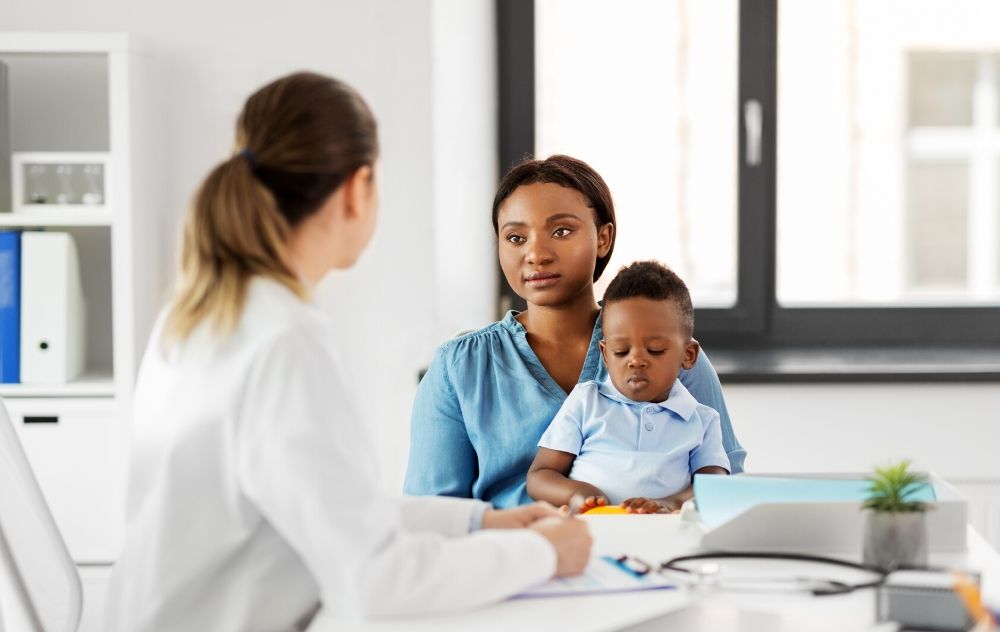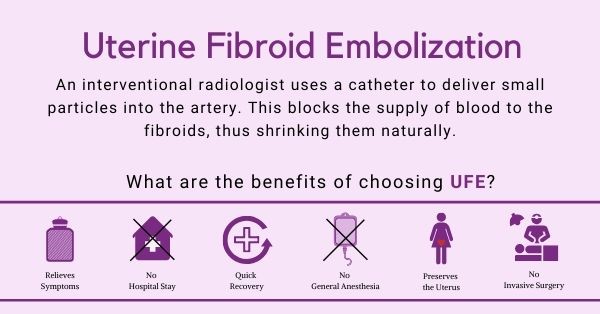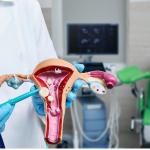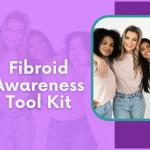
In the U.S., between 70-80% of women will develop fibroids by 50. While some women don’t experience any pain, other women are forced to tolerate uncomfortable symptoms such as excessive and prolonged menstrual bleeding, intense cramping, anemia causing fatigue, constipation, bloating, and pain during sex. According to the National Institute of Health, over 200,000 hysterectomies are performed every year to eliminate fibroid and fibroid symptoms; however, invasive surgeries are not the only option.
Being diagnosed with fibroids and choosing the right treatment can be an intimidating experience. Even though fibroids are common, many women feel overwhelmed and under-educated when managing their fibroid symptoms. Before getting invasive, irreversible surgery such as a hysterectomy, you should consult with multiple doctors who treat fibroids regarding how different procedures may affect your body.
It’s crucial to choose a doctor who treats fibroids and doesn’t suggest invasive surgeries as the only course of action available. Many women head into their first fibroid treatment consultation blindly and come out wishing they had asked their doctor specific questions that could ease their concerns. There’s nothing worse than leaving a doctor’s office with your questions and concerns unanswered.
MEET WITH A FIBROID SPECIALIST

Here are a few questions to ask your doctor to fully understand fibroid treatment:
1. Are Fibroids Cancerous?
No, they are one of the most common benign tumors affecting up to 80% of women by age 50.
2. What do Fibroids Look Like?
Fibroids are growths that may be connected to the uterine wall and may grow on small stalks inside or outside of the uterus. They are often identified during a regular pelvic exam, and their location may be found using imaging.
3. What is Considered a Large Fibroid?
A large fibroid measures at least 10 cm or more in diameter. However, they can grow much larger, from the size of a grapefruit all the way up to a watermelon.
4. Do Fibroids Cause Infertility?
Many women with fibroids can become pregnant. While infertility isn’t a common issue with fibroids, it can happen, depending on the location of the tumors. Fibroids found in the uterine cavity, known as submucosal fibroids, can prevent implantation and inhibit the embryo’s growth.
5. What Kind of Treatment Preserves My Ability to Get Pregnant?
UFE is a treatment that can shrink the fibroids and alleviate the symptoms while preserving fertility.
6. Why Do Fibroids Cause Leg and Back Pain?
Fibroids may compress the nerves in the pelvic area, which allows the pain to spread down the back, hips, and legs. It is important to seek treatment if you experience this type of pain.
SCHEDULE A FIBROID CONSULTATION ONLINE
7. Why Do Fibroids Cause Bladder or Bowel Issues?
Depending on where the fibroid is located, it may press on the bladder or bowel. It can cause frequent urination or difficulty urinating. Fibroids can also cause you to strain for bowel movements, which may end up causing hemorrhoids. If a fibroid presses on the rectum, it can lead to constipation.
8. What’s the Difference Between Ovarian Cysts and Fibroids?
An ovarian cyst is a fluid-filled sac that grows on the ovary, while a uterine fibroid is a firm non-cancerous tumor that develops in or on the uterus.
9. I’m Noticing a Stomach Bulge, Could it Be Fibroids?
If you notice that your stomach is larger than normal and you aren’t pregnant, it could be caused by fibroids. Fibroids can cause an enlarged uterus as they grow, which can make you look like you’re pregnant.
10. Will Fibroid Treatment Help Me Lose Weight?
Fibroid treatment can help you lose weight because it may cause your fibroids to shrink and die. If they were large, you could lose several pounds after treatment. Treatment can alleviate symptoms and allow you to return to your everyday lifestyle.
11. Is It Hard to Lose Weight After Fibroid Treatment?
You will often find it easier to lose weight after fibroid treatment because you’ll feel better once your body has returned to normal. You may see your energy levels increase, which can help you be more active.
12. How does Recovery After UFE differ from a Hysterectomy or Myomectomy?
With UFE, you can expect to fully recover between 1-2 weeks. The procedure itself is done as outpatient and is minimally invasive. The fibroid specialist will insert a tiny catheter into the leg and inject embolic materials into the artery feeding the fibroid to block the blood flow. During the months following your procedure, you will return to the doctor’s office for a few routine follow-up appointments. A hysterectomy generally requires six to eight weeks for a full recovery. Recovery after a myomectomy can vary, depending on the exact procedure performed. It ranges from about a week to six weeks for a full recovery.
MORE QUESTIONS? TALK TO A FIBROID SPECIALIST NOW
Contact USA Fibroid Centers
If you’re experiencing unpleasant fibroid symptoms and looking for a non-surgical alternative to hysterectomy, USA Fibroid Centers can help. Our interventional radiologists have years of experience helping women like you find lasting relief from painful fibroid symptoms. They will provide answers to the questions you ask about uterine fibroid embolization. Schedule a consultation online or give us a call at 855.615.2555 to learn more at one of our centers.



